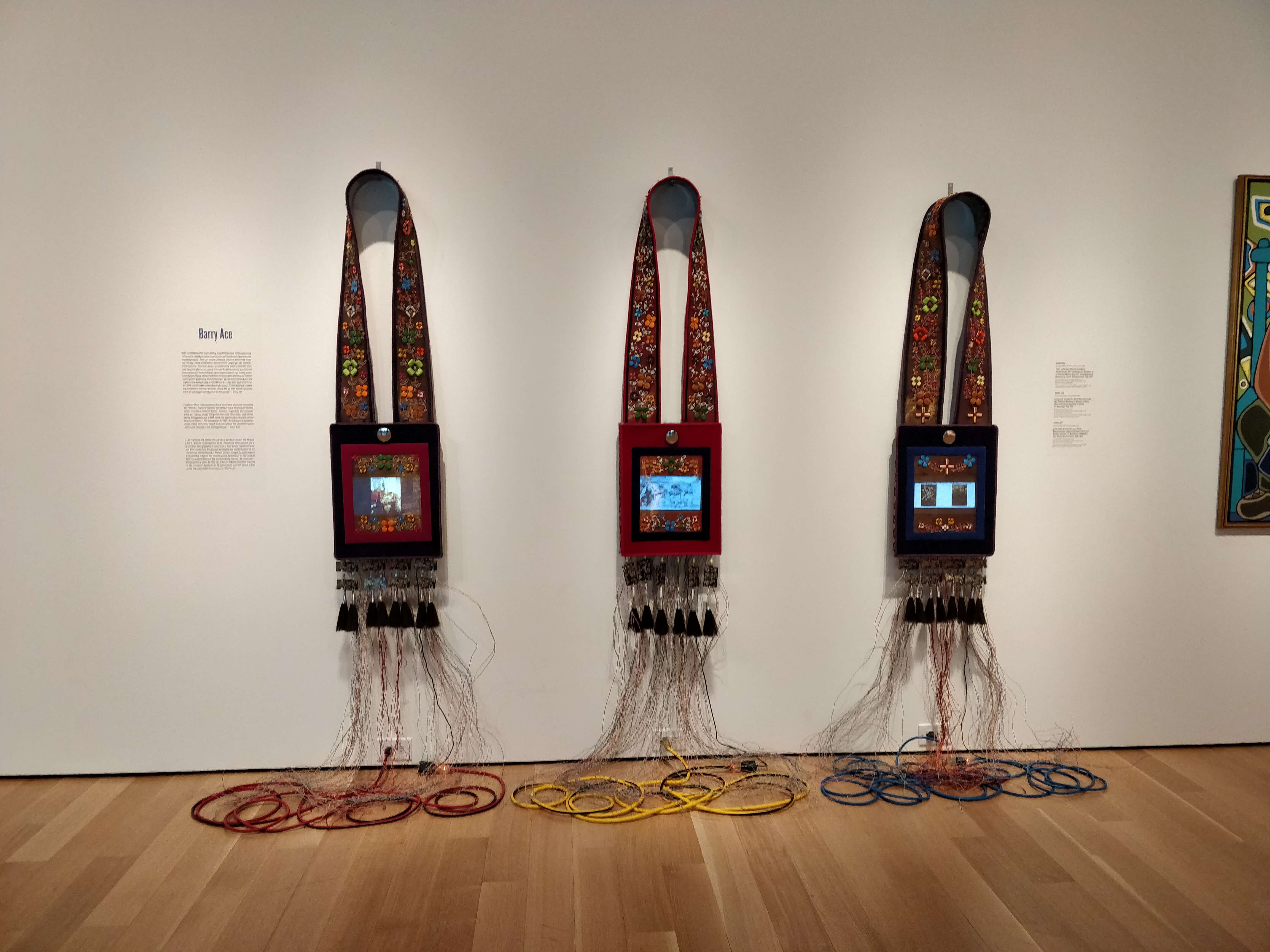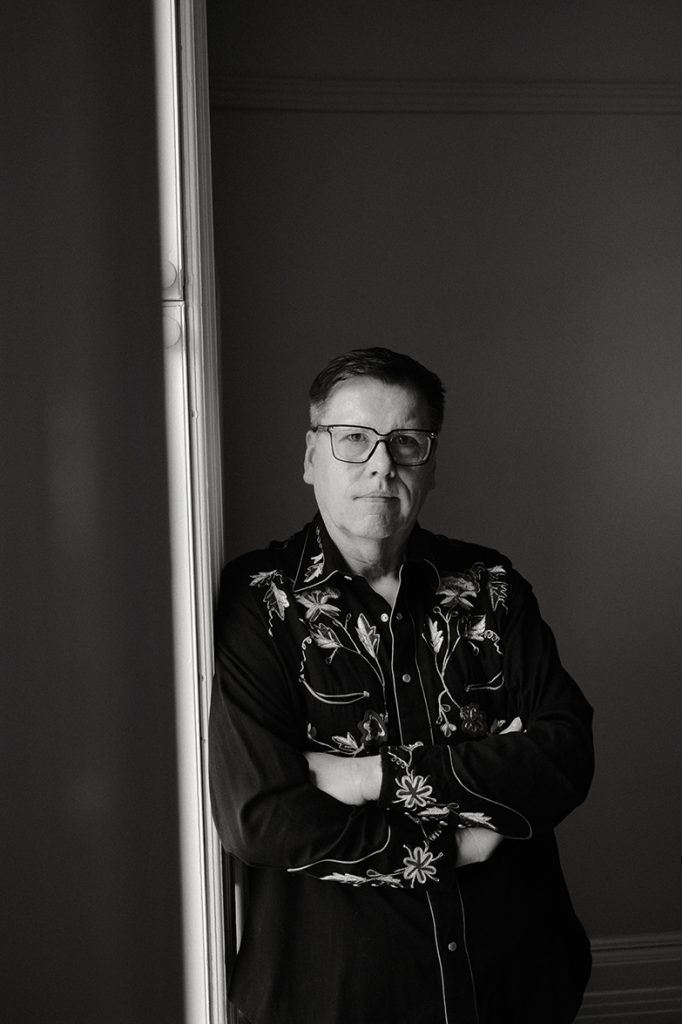Experiment 2 — Related Works: trinity suite (2011-2015)

Background
As part of the Creation & Computation course, each student submitted 5 experiments in creative computing. To accompany our explorations, we were tasked with selecting one work or grouping of works (artwork, design project, research artifact, technology innovation, etc.) that was related to the theme or tools of the current experiment.
The theme for Experiment 2 was Indoor/Outdoor, and we learned how to use Arduino microcontrollers, servo motors, LEDs, and the likes.
The following post gives an overview of the work I selected, and how it relates to the theme. If you would like to see what I created for Experiment 2, check out my post on the "CandyDrop, the Arduino Candy Dispenser".
Table of Contents
Description of the work
The work I've selected is titled trinity suite, and it's by Barry Ace. I saw trinity suite around this time last year at the Art Gallery of Ontario (AGO) when I came to Toronto for a group tour of OCAD U. The series was part of their "Every.Now.Then: Reframing Nationhood" exhibition.
trinity suite features three bandolier bags reimagined for the digital age. Ace's futuristic bags replicate floral designs from the M'Chigeeng First Nation located in Odawa Mnis (Manitoulin Island), his ancestral home. In place of beads, Ace reuses abandoned circuit boards, computing parts, and electrical components like resistors and capacitors to construct floral patterns. Prior to European settlers' presence, artists of the Great Lakes typically used dyed porcupine plumes as decorative elements. As glass beads later became part of trade, artists began integrating these materials into their works.

Each bandolier bag from trinity suite contains an iPad, which include, from left to right:
- Niibwa Ndanwendaagan (My Relatives): This iPad shows Ace family photographs.
- Bandolier for Manidoo minising (Manitoulin Island): This iPad shows a 1925 film made on Manitoulin Island. At the time, the Canadian government prohibited Indigenous Peoples from dancing on reserves and wearing regalia. The group shown in the film was asked to dance for visiting bureaucrats. According to the AGO's signage, "Ace says that although the atrocity of the ban is important, what is also relevant is the generosity of the dancers who wanted to host the delegation and share the beauty of their culture, even though that group was the same one trying to erase their rights, history and culture."
- Bandolier for Charlie (In Memoriam): This iPad shows photographs of Ace's late friend.
Historical Context
According to a resource document by the AGO, traditionally, bandolier bags were part of ceremonial dress, worn on the shoulder, crossing the body, and resting on the person's hip. Early bandolier bags were decorative and had no pockets.
Many Nations across North America made these bags, which are a mark of friendship and generosity. The different materials and designs are an indication of who made them and their origin. Traditionally, women around the Great Lakes region used glass seed beads to embellish bandolier bags, moccasins, and other ceremonial items). Because of their minuscule size, the use of seed beads represents an incredible amount of time, skill, and labour for the maker.
How it relates to our experiment
I selected this work because although it makes use of the electrical components in a more decorative and metaphorical sense than literal sense, I think it encompasses the Indoor/Outdoor quite well.
As he explains on his website, Barry Ace's textile practice draws from the Great Lakes' historical Anishinaabeg arts, incorporating geometric and floral beadwork motifs with upcycled, reclaimed, and salvaged electronic components and circuitry. Using these resistors and capacitors, he is referencing Anishinaabeg beadwork as a metaphor for cultural continuity, bridging the present with the past and the future. It's a demonstrable act of nationhood, modernity, and resistance.
As the URL:IRL exhibition, in which Ace was featured, explains:
By fusing traditional and contemporary materials and forms, Ace articulates the ways that Indigenous people have always adapted to complex cultural and technological changes, incorporating and using new forms, materials and mediums in culturally-specific ways that counter and resist dominant hegemonies.
Finally, as the AGO's educational resource for this work so aptly put it:
Ace's use of electrical components is both a literal nod to his ancestors' adoption of new materials as well as a metaphor to the ideas behind traditional designs. Beaded flowers typically reference medicinal flowers, and these flowers release their healing properties when infused. Similarly, capacitors and resistors store and release electrical current, releasing energy when needed. By using contemporary technologies to reinterpret traditional designs, Ace connects the present-day to the past, asserting Anishinaabe culture and belief systems' continuance into the future.
Creator of the work

Barry Ace (b. 1958) is a practicing Anishinaabe (Odawa) artist based in Ottawa, Ontario. He is a debendaagzijig (citizen) of M'Chigeeng First Nation, Odawa Mnis (Manitoulin Island). His assemblage textile works and mixed media paintings explore various aspects of cultural continuity and the contemporary and historical convergence. Initially, he studied to be an electrician but later pivoted to graphic arts.
Ace traces his interest in artmaking back to his childhood when he would help gather materials to help his great-aunt Annie Owl-McGregor make Anishinaabe splint-ash baskets. Both his great-aunt and grandmother Mary McGregor-Ace were artists who made basketry, quillwork, and beadwork.
Ace has shown in numerous group and solo exhibitions, as well as public and private collections in Canada and abroad. In 2015, he received the K.M. Hunter Artist Award for the visual arts, administered by the Ontario Arts Foundation. Ace's contribution to contemporary art in Canada is noted in the Art Institute of Canada's Glossary of Canadian Art History. He is also a member of the Ottawa Ontario 7 (007) Collective, which presents new work outside of the traditional curatorial context or art museum.
Works Cited / Bibliography
Ace, Barry. 2020a. “Artist Statement.” Barry Ace. 2020. http://www.barryacearts.com/artist-statement/
———. 2020b. “Biography.” Barry Ace. 2020. http://www.barryacearts.com/bio-2/
———. 2020c. “Mixed Media & Assemblage (2017 – 2019).” Barry Ace. 2020. http://www.barryacearts.com/assemblages/mixed-media-assemblages-2/
Art Gallery of Ontario. 2017. “Barry Ace, Trinity Suite - Teacher Resource.” Art Gallery of Ontario. https://www.barryacearts.com/news-2020/aces-work-featured-in-new-ago-teacher-resource-guide/
Daigle, Jasmin. 2023. Portrait of Barry Ace. JPEG Image. https://www.barryacearts.com/wp-content/uploads/2023/04/MeHeffel-682x1024.jpg
Ottawa Art Gallery. 2019. “CARBON + LIGHT - Juan Geuer’s Luminous Precision • Barry Ace.” Ottawa Art Gallery. August 18, 2019. https://www.barryacearts.com/exhibitions-2019/ottawa-art-gallery-ottawa-ontario-carbon-and-light/
URL:IRL. n.d. “Artists - Barry Ace.” URL:IRL. Accessed October 27, 2020. http://urlirl.ca/artists.html


Comments